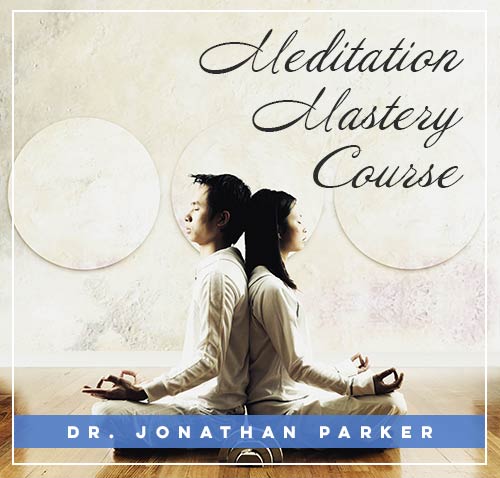Zen Meditation Basics: Silent Sitting & Presence

Before diving in, please note: This post is for informational purposes only. If you’d like to know more about how we approach topics, feel free to check out our friendly Disclaimer Page.
Hey there, amazing readers! 🖐️ Just a quick note: yes, we know there are a lot of ads here. Trust us, we get it—it’s not the prettiest look, but they help us keep this blog alive and kicking. Those pesky little ads cover the costs of all the behind-the-scenes magic, from hosting and tech stuff to creating content we hope you’ll love.
We’re committed to delivering quality posts, and your support (even just sticking around despite the ads) means everything to us. So, bear with us, and thanks for helping us keep the good vibes rolling. Now, on to the fun stuff! 😉
TRANSLATE BUTTON AT THE END OF THE ARTICLE
A Quick Overview
Zen meditation, also known as Zazen, is a traditional form of meditation that originates from Zen Buddhism.
It focuses on silent sitting and the cultivation of presence.
This practice aims to help individuals quiet their minds, gain insight into their true nature, and experience inner peace and clarity.
By incorporating Zen meditation into your daily routine, you can improve your physical, mental, and emotional well-being.
In this article, we will explore the basics of Zen meditation, including silent sitting, presence, setting up your meditation space, posture and alignment tips, breathing techniques, dealing with distractions, mindfulness, gratitude, compassion, building a consistent practice routine, and finding a Zen meditation community.
Introduction to Zen Meditation
Zen meditation is a form of meditation that involves sitting in a specific posture and focusing on the breath or a mantra.
The goal of Zen meditation is to quiet the mind and cultivate awareness.
This practice is often done in a group setting, with a Zen teacher guiding the session.
However, it can also be practiced individually at home.
Zen meditation is rooted in the Buddhist tradition and is a central practice in Zen Buddhism.
Understanding Silent Sitting
Silent sitting is the foundation of Zen meditation.
It involves sitting in a specific posture, typically cross-legged on a cushion, with a straight back and relaxed shoulders.
During silent sitting, practitioners focus on their breath or a mantra to quiet the mind and bring their awareness to the present moment.
The key to silent sitting is to observe your thoughts without judgment and allow them to pass without getting caught up in them.
This practice helps cultivate inner peace and clarity.
Benefits of Zen Meditation
Zen meditation offers a wide range of benefits for physical, mental, and emotional well-being.
Some of the benefits include:
– Reduced stress and anxiety
– Improved focus and concentration
– Increased self-awareness
– Enhanced emotional regulation
– Greater sense of inner peace and calm
– Improved sleep quality
– Boosted immune function
– Increased compassion and empathy
By incorporating Zen meditation into your daily routine, you can experience these benefits and improve your overall quality of life.
Importance of Presence
Presence is a key component of Zen meditation.
Being present means fully inhabiting the current moment without judgment or distraction.
By cultivating presence during meditation, you can learn to let go of worries about the past or future and focus on what is happening right now.
This practice can help reduce stress, improve concentration, and enhance your overall sense of well-being.
Setting Up Your Meditation Space
Creating a dedicated meditation space can help you establish a consistent meditation practice.
Choose a quiet and peaceful area in your home where you won’t be disturbed.
Consider adding elements such as a cushion or meditation bench, candles, incense, or other items that help create a calming atmosphere.
Keep your meditation space clean and clutter-free to promote a sense of serenity and focus.
Posture and Alignment Tips
Proper posture is essential for successful Zen meditation.
When sitting for meditation, sit with your back straight, shoulders relaxed, and chin slightly tucked.
Cross your legs in a comfortable position or use a meditation bench for support.
Keep your hands resting gently on your lap or knees, palms facing upward.
This alignment helps promote deep breathing and allows for a clear flow of energy throughout your body.
Breathing Techniques in Zen Meditation
Breath awareness is a fundamental aspect of Zen meditation.
Focus on your breath as it naturally flows in and out of your body.
Notice the sensation of the breath as it enters and exits your nostrils, chest, and abdomen.
Allow your breath to be your anchor to the present moment.
If your mind starts to wander, gently guide your attention back to your breath.
This practice can help calm the mind and cultivate mindfulness.
Dealing with Distractions
Distractions are a common challenge in meditation.
When distractions arise during your practice, acknowledge them without judgment and gently return your focus to your breath or mantra.
Recognize that distractions are a natural part of the meditation process and try not to get frustrated with yourself.
Over time, with consistent practice, you will learn to navigate distractions more skillfully and deepen your meditation practice.
Incorporating Mindfulness in Practice
Mindfulness is the practice of paying attention to the present moment with openness and curiosity.
In Zen meditation, mindfulness is cultivated through silent sitting and breath awareness.
By bringing mindful awareness to your thoughts, emotions, and bodily sensations during meditation, you can develop a deeper understanding of yourself and your inner world.
Mindfulness can also help you become more responsive and less reactive in everyday life.
Cultivating Gratitude and Compassion
Gratitude and compassion are essential qualities that can be nurtured through Zen meditation.
During your practice, take a moment to reflect on the things in your life that you are grateful for.
Cultivate a sense of appreciation for the present moment and the people around you.
Additionally, practice sending loving-kindness and compassion to yourself and others.
By cultivating gratitude and compassion, you can cultivate a more positive and compassionate outlook on life.
Building a Consistent Practice Routine
Consistency is key to reaping the full benefits of Zen meditation.
Set aside a specific time each day for your meditation practice, whether it’s in the morning, during your lunch break, or before bed.
Start with short sessions and gradually increase the duration as you become more comfortable with the practice.
By establishing a consistent routine, you can create a habit that supports your overall well-being and growth.
Finding a Zen Meditation Community
Joining a Zen meditation community can provide valuable support and guidance for your practice.
Seek out local meditation centers, Zen temples, or online communities where you can connect with like-minded individuals and experienced practitioners.
Participating in group meditation sessions and teachings can deepen your understanding of Zen principles and provide a sense of belonging and community.
By surrounding yourself with others on the path of Zen meditation, you can enhance your practice and receive encouragement along the way.
Conclusion
Zen meditation offers a powerful path to inner peace, self-awareness, and overall well-being.
By incorporating silent sitting, presence, mindfulness, gratitude, and compassion into your practice, you can cultivate a deeper connection with yourself and the world around you.
Establishing a consistent meditation routine, creating a dedicated meditation space, and finding a supportive community can further enhance your journey in Zen meditation.
Remember that the key to success in Zen meditation lies in patience, perseverance, and a willingness to embrace the present moment with an open heart and mind.
Start your Zen meditation practice today and discover the transformative power of silent sitting and presence.

The Enlightenment Journey is a remarkable collection of writings authored by a distinguished group of experts in the fields of spirituality, new age, and esoteric knowledge.
This anthology features a diverse assembly of well-experienced authors who bring their profound insights and credible perspectives to the forefront.
Each contributor possesses a wealth of knowledge and wisdom, making them authorities in their respective domains.
Together, they offer readers a transformative journey into the realms of spiritual growth, self-discovery, and esoteric enlightenment.
The Enlightenment Journey is a testament to the collective expertise of these luminaries, providing readers with a rich tapestry of ideas and information to illuminate their spiritual path.
Our Diverse Expertise 🌟
While our primary focus is on spirituality and esotericism, we are equally passionate about exploring a wide range of other topics and niches 🌍📚. Our experienced team is dedicated to delivering high-quality, informative content across various subjects ✨.
To ensure we provide the most accurate and valuable insights, we collaborate with trusted experts in their respective domains 🧑🏫👩🏫. This allows us to offer well-rounded perspectives and knowledge to our readers.
Our blog originally focused on spirituality and metaphysics, but we’ve since expanded to cover a wide range of niches. Don’t worry—we continue to publish a lot of articles on spirituality! Frequently visit our blog to explore our diverse content and stay tuned for more insightful reads.






